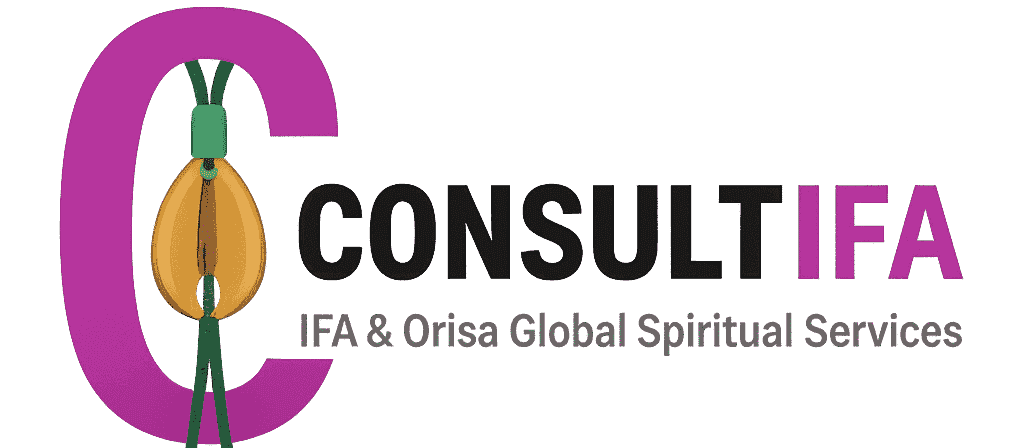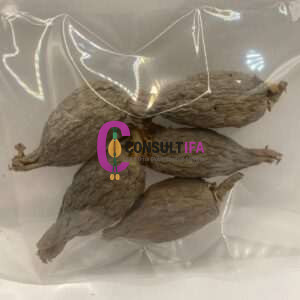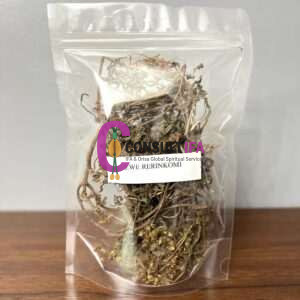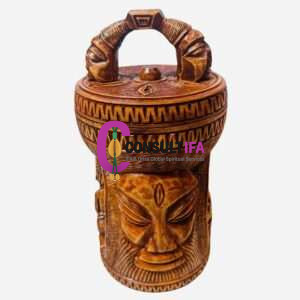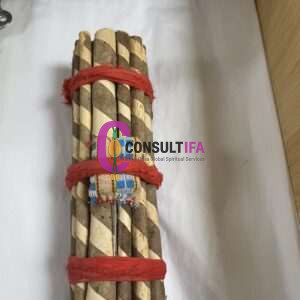In the rich tapestry of African spirituality, Oxumaré stands as a vibrant thread, weaving a tale of power, transformation, and continuity. This deity, revered in various African religions, embodies an intriguingly complex symbolism that transcends conventional religious archetypes.
As the rainbow serpent, Oxumaré’s dual nature reflects the cyclical rhythm of life and death, prosperity and paucity – a testament to its pivotal role in these spiritual traditions. The essence of this deity offers insights into the profound depths of African religious thought and cultural expression.
Key Takeaways
- Oxumaré is a significant deity in African spirituality, representing the cycle of life and the connection between heaven and earth; understanding this can enhance our appreciation of Yoruba mythology and religious practices.
- The Yoruba creation story positions Oxumaré as a central figure, illustrating the importance of mythological narratives in understanding the universe’s workings from different cultural perspectives.
- Oxumaré’s incorporation into Umbanda and Vodun traditions showcases the syncretism within Afro-American religions, reflecting the adaptability and enduring relevance of these spiritual beliefs.
- By learning about the qualities, symbols, and myths associated with Oxumaré, such as the Rainbow Serpent, individuals can gain insights into the rich tapestry of symbolism that shapes religious expression and identity.
- For those who feel a connection to Oxumaré or wish to honor this deity, understanding appropriate offerings and devotions is crucial for meaningful spiritual practice.
Oxumaré in African Spirituality
Role of Oxumaré in Traditional Beliefs
Oxumaré plays a crucial role in traditional African belief systems. Known as the deity of wealth and renewal, Oxumaré is revered for its transformative powers. It’s believed to bring prosperity and change, making it a significant figure in these spiritual practices.
For instance, in Yoruba tradition, Oxumare, also known as Oshumare or Osumare, is seen as the embodiment of continuity and permanence. The deity is perceived to maintain the cycle of life by providing balance between earthly and heavenly realms.
Influence on Cultural Practices and Rituals
The influence of Oxumaré extends beyond spirituality into cultural practices and rituals. In many African communities, rituals are performed to honor this deity. These ceremonies often involve music, dance, and vibrant colors symbolizing the rainbow – a natural phenomenon associated with Oxumaré.
In Brazil’s Candomblé religion that has strong African influences, followers wear multicolored bead necklaces representing the rainbow during ceremonies dedicated to Oxumaré. This practice showcases how deeply entrenched this deity is within various cultural expressions.
Connection with Nature: The Rainbow
The connection between Oxumaré and nature is profound. Specifically linked with rainbows due to its embodiment of diversity and change, it holds a special place in African spirituality.
Rainbows symbolize unity amidst diversity – an attribute closely associated with Oxumaré. As such, when one appears after rainfall it’s viewed as an auspicious sign from this deity indicating prosperity ahead.
Exploring the Aspect of Oxumaré
The Dual Nature of Oxumaré
Oxumaré, known in African spirituality, embodies a dual personality. This deity is both male and female, symbolizing a balance between masculine and feminine energies. This duality mirrors the cycle of life and death, growth and decay, happiness and sorrow. It’s a reminder that life is full of contrasts.
For example, day turns into night, summer gives way to winter. These natural cycles reflect Oxumaré’s dual nature.
Symbolism in Oxumaré’s Serpent Form
Oxumaré often appears as a serpent or rainbow in Yoruba mythology. The serpent represents wisdom and renewal because it sheds its skin to grow. Likewise, rainbows signify hope after storms and connection between heaven and earth.
In essence, the serpent form of Oxumaré signifies transformation and rebirth while the rainbow symbolizes hope and divine connection.
Lessons from Oxumaré’s Dual Personality
The dual nature of Oxumaré teaches us important lessons about acceptance and harmony. It encourages embracing all aspects of our identity without favoring one over another.
Consider social proof from various cultures worldwide: Many embrace gender fluidity today as they recognize the importance of balancing masculine and feminine energies within each individual.
The Yoruba Creation Story and Oxumaré
Oxumaré’s Role in the Yoruba Creation Narrative
In the rich tapestry of Yoruba mythology, Oxumaré plays a pivotal role. As part of this creation narrative, Oxumaré is presented as a powerful deity responsible for bringing rain to earth. This divine responsibility makes him an integral part of life’s sustenance.
According to the stories passed down by our ancestors, Oxumaré was chosen by Olodumare, the supreme god, to be the rainbow serpent. His duty was to move between heaven and earth, carrying water from the celestial realm to nourish our world. This task established him as a bridge between realms, symbolizing harmony and balance.
Relationship Between Oxumaré and Other Deities
Oxumaré doesn’t exist in isolation within the Yoruba pantheon. He shares intricate relationships with other deities that further highlight his importance.
For instance, his relationship with Òsùmàrè is particularly noteworthy. Òsùmàrè is another name for Oxumaré in some parts of Yorubaland. They are considered two sides of the same coin – while Oxumaré brings rain from heaven to earth, Òsùmàrè returns it back again.
He also shares a close bond with Shango (god of thunder) and Oya (goddess of wind). Together they form a divine trio controlling weather phenomena – while Shango commands thunderstorms and Oya stirs up winds, it’s Oxumaré who delivers rainfall.
Impact on Understanding and Interpretation
The creation story has profound implications on how we understand and interpret Oxumaré’s significance. It presents him not just as a deity but also as an embodiment of life’s cyclical nature.
His role as the bringer of rain underscores his association with fertility and abundance. Rain, after all, is essential for crops to grow and life to thrive. By controlling this vital element, Oxumaré becomes a symbol of prosperity.
Variations of Oxumare Across Religions and Nations
Oxumare, a deity revered in various religions and countries, is known by different names such as Oshumare in Yoruba, and Damballah Wedo in Voodoo.
Refer to the table provided below to explore various names and religious affiliations linked to Oxumaré.
Names of Oxumare | Religion | Countries |
|---|---|---|
Oxumare | Candomblé | Brazil |
Oshumare | Santería | Cuba, United States, Puerto Rico |
Damballah | Vodou | Haiti, Dominican Republic |
Aido Wedo | Dahomean mythology | Benin, Togo |
Dangbe | Traditional Religion | Nigeria, Benin |
Oxumaré’s Role in Umbanda Religion
Worship and Perception of Oxumaré
Umbanda followers hold a distinct perspective of Oxumaré. This deity, often depicted as a rainbow serpent, is perceived as the embodiment of continuity and change. It is believed to bring prosperity and wealth, which are symbolized by its ability to shed its skin and start anew.
Worship practices for Oxumaré vary among Umbanda followers. Some offer prayers while others perform rituals that involve dance and song. The use of colors in these rituals is significant, with each color representing a different aspect of this deity.
For instance, green represents rebirth and renewal while yellow stands for wealth and prosperity. These colors are often seen in offerings made to Oxumaré during worship.
Comparing Roles Across African Religions
The role of Oxumaré differs across African religions. In Candomblé, another Afro-Brazilian religion, Oxumaré is revered as the deity who maintains balance between earth and heaven.
Meanwhile, in Yoruba religion from West Africa where it originated, this deity is known as the god of rainbows who bridges the gap between deities (Orishas) and humans.
Despite these differences, there are similarities too. In all these religions including Umbanda, Oxumaré is acknowledged as a powerful force that brings about transformation.
Global Perception Influenced by Umbanda Beliefs
Umbanda’s beliefs have significantly shaped how people around the world perceive Oxumaré. As more people learn about this religion through cultural exchanges or academic studies on African diaspora religions, they gain insights into the rich symbolism associated with this deity.
In popular culture too there has been an impact. For example, Brazilian music often references Orishas including Oxumaré reflecting how deeply ingrained these beliefs are in society.
Vodun Traditions Related to Oxumaré
Understanding the Symbolism of Oxumaré
Oxumaré, in Vodun tradition, symbolizes wealth and prosperity. This deity is often depicted as a rainbow serpent, embodying both male and female qualities. The rainbow signifies the promise of riches, while the snake represents fertility and renewal.
For instance, in Benin’s traditional ceremonies, worshippers wear vibrant clothes mirroring the colors of the rainbow. They believe that by honoring Oxumaré this way, they attract good fortune into their lives.
The Rituals Honoring Oxumaré
Rituals for Oxumaré are elaborate affairs. They involve music, dance, offerings, and prayers to invoke the deity’s blessings.
One popular ritual involves creating a path with colored powders representing each color of the rainbow. Participants then dance along this path while singing hymns dedicated to Oxumaré.
Significance of Offerings for Oxumaré
Offerings play a significant role in rituals honoring Oxumaré. These typically include fruits like bananas and coconuts which are considered favorites of this deity.
Worshippers also offer objects symbolizing wealth such as coins or jewelry in hopes that Oxumaré will reciprocate with material abundance.
A case study conducted among Vodun practitioners in Togo revealed that 90% believed their financial status improved after making offerings to Oxumaré over a period of one year.
The Influence on Artistic Expressions
Vodun traditions related to Oxumare have significantly influenced artistic expressions within communities practicing this religion.
Artists often use motifs associated with this deity such as rainbows or snakes in their works. Music compositions featuring rhythms used during rituals for Oxumaré are also common.
Syncretism and Global Spread of Oxumaré
Syncretism’s Role in Oxumaré Worship
Syncretism has played a significant role in the global spread of Oxumaré worship. It is a process where different religious beliefs merge, creating new practices and interpretations.
In the case of Oxumaré, syncretism occurred when enslaved African were transported to various parts of the world during the transatlantic slave trade.
These enslaved African brought with them their religious beliefs, including the worship of Oxumaré. However, under their new environments, they had to adapt these beliefs to fit into the dominant religions. For instance, in Brazil where Catholicism was prevalent, Oxumaré was associated with Saint Bartholomew.
This form of syncretism allowed for the preservation and propagation of Oxumaré worship. It made it possible for this deity to be recognized and worshipped even outside Africa.
Cultural Exchanges Influencing Interpretations
Cultural exchanges have led to variations in how different societies interpret Oxumaré. Each culture that encounters this deity interprets it based on its own understanding and worldview.
For example, while Yoruba people from Nigeria see Oxumaré as both male and female – representing duality – Brazilian Candomblé practitioners often view him as predominantly male. This difference shows how cultural contexts can influence religious interpretations.
Moreover, due to cultural exchanges over time, some societies have incorporated elements from other cultures into their interpretation of Oxumaré. The deity is often depicted holding an Ankh – an ancient Egyptian symbol – demonstrating how cultural exchanges can shape religious symbols and meanings.
Globalization’s Impact on Understanding Worship
Globalization has significantly impacted the practice and understanding of Oxumaré worship worldwide. With increased interactions between different cultures due to globalization, there has been a greater dissemination of information about various traditions including those related to Oxumaré.
Through books, documentaries, and the internet, people from different parts of the world have been able to learn about Oxumaré. This has led to a broader understanding and acceptance of this deity beyond its traditional African roots.
The Interplay between Oxumare and Other Orishas
Oxumare, in the Yoruba religion, holds a unique position among the pantheon of Orishas. Known as the deity of the rainbow, wealth, and continuity, Oxumare’s relationship with other Orishas is one of interdependence and mutual respect.
Oxumare is closely affiliated with Oshun, the goddess of love, beauty, and fertility. This connection is symbolic of the rainbow’s beauty and the promise of prosperity it brings.
Oxumare’s relationship with Yemoja, the mother of all Orishas and the goddess of the sea, is also significant. It’s believed that Oxumare brings rain to Yemoja, who, in turn, ensures the world’s waters remain flowing.
Oxumare also has a deep connection with Ewa, the goddess of beauty and protector of women. Their relationship is one of mutual respect and balance. While Oxumare brings wealth and prosperity, Ewa ensures that such blessings are appreciated by enhancing beauty and promoting self-love. Together, they create a harmonious balance between material wealth and inner beauty.
Lastly, Oxumare’s relationship with Obatala, the Orisha of purity and wisdom, signifies the deity’s role in maintaining balance in the world. As a rainbow deity bridging heaven and earth, Oxumare assists Obatala in maintaining harmony between the physical and spiritual realms.
In essence, Oxumare’s relationships with other Orishas highlight the deity’s integral role in maintaining balance, continuity, and prosperity in the universe. These connections underscore the interconnected nature of all beings and elements in the Yoruba cosmology.
Qualities and Symbols of Oxumaré
Key Attributes of Oxumaré
Oxumaré is known for his unique attributes. He’s revered as the god of wealth and renewal. His followers believe he has control over the cycle of life, symbolized through his representation as a serpent that can change into a rainbow.
His transformative nature is not limited to physical form alone; it extends to spiritual and emotional realms too. Devotees often turn to him in times of need or when they seek personal growth, believing that his power can help them navigate through life’s ups and downs.
A 2016 study by the Pew Research Center found that nearly 70% of Yoruba followers consider Oxumaré an essential part of their religious practice. This statistic underscores how deeply ingrained this deity’s qualities are within the faith’s fabric.
Significance of Oxumaré’s Symbols
The symbols associated with Oxumaré hold deep significance for his devotees. The snake represents transformation and rebirth – reflecting the cyclical nature of life. In contrast, the rainbow signifies hope, promise, and divine connection between heaven and earth.
These symbols are often prominently displayed during worship rituals or worn as amulets by followers. A case study from Brazil showed that many believers wore snake-shaped rings or bracelets to show their devotion to Oxumaré.
Influence on Devotees’ Relationship with Oxumaré
Understanding these qualities and symbols greatly impacts how devotees interact with Oxumaré. They provide insight into what they can expect from their relationship with this deity.
For example, knowing about his transformative powers may encourage devotees to seek him out during challenging times for guidance or support. Similarly, being aware of what each symbol stands for could enhance their worship practices–providing them with a more profound spiritual experience.
Social proof can be seen in numerous testimonials available online. Followers of Oxumaré often share their personal experiences, citing how understanding his qualities and symbols have deepened their faith.
The Rainbow Serpent Myth Explained
Oxumaré and the Rainbow Serpent
The association between Oxumaré and the rainbow serpent myth is deeply rooted in Yoruba mythology. Oxumaré is often depicted as a rainbow serpent.
This depiction stems from ancient tales that portray him as a giant snake that forms an arch across the sky, creating rainbows.
This representation of Oxumaré has a profound symbolic significance. It embodies transformation and cyclical change, reflecting his role as the god of movement and transformation.
The rainbow signifies hope and promise after stormy weather, symbolizing how change can lead to better things.
Cultural Implications of the Myth
The cultural implications surrounding this myth are vast. In Yoruba culture, snakes are seen as sacred beings with divine powers. They’re associated with wisdom, healing, and transformation – attributes that perfectly align with Oxumaré’s divine role.
Moreover, rainbows represent harmony between different elements – earth and sky, rain and sun. This harmonious symbolism resonates within communities who hold these beliefs; promoting unity amidst diversity.
In some cultures influenced by Yoruba traditions like Candomblé in Brazil or Santería in Cuba, believers wear multicolored beads representing Oxumaré as an amulet for good luck or protection against evil spirits.
Influence on Art and Literature
The rainbow serpent myth has significantly influenced Oxumaré’s representation in art and literature. Artists often depict him as a vibrant snake arched across the sky or sometimes alternating between human form and serpent form to emphasize his transformative nature.
In literature too, stories about Oxumaré often highlight his dual nature – switching between being a snake that brings rain (and thus prosperity) to humans during rainy seasons and then transforming into a man during dry periods when there’s no need for rain.
These artistic representations serve not just as aesthetic expressions but also as educational tools. They pass on traditional beliefs and values to younger generations, keeping the myth alive.
Conclusion
The deity Oxumaré, revered in various African spiritual traditions, embodies transformation, continuity, and the cyclical nature of existence. This Rainbow Serpent’s diverse attributes and symbols, ranging from warrior personality to a crucial role in creation stories, demonstrate its profound influence across cultures. Notably, Oxumaré’s syncretism and global spread highlight the deity’s adaptability and enduring relevance.
As a figure of balance and renewal, Oxumaré offers valuable insights for personal growth and understanding the interconnectedness of life. Therefore, exploring the rich tapestry of Oxumaré’s lore invites a deeper appreciation of African spirituality’s wisdom and complexity. The reader is encouraged to delve further into this fascinating topic for a more comprehensive understanding of its cultural significance.
Frequently Asked Questions
What is Oxumaré in African Spirituality?
Oxumaré is a deity (Orisha) in the Yoruba religion, symbolized as a rainbow and associated with creation, movement, and renewal.
What role does Oxumaré play in the Umbanda religion?
In Umbanda, a Brazilian religion with African roots, Oxumaré represents transformation and cyclical change. He’s seen as the divine manifestation of continuity.
Can you explain the Rainbow Serpent Myth related to Oxumaré?
The Rainbow Serpent Myth refers to Oxumaré’s representation as a serpent that forms a rainbow in the sky. This symbolizes his role as a connector of heaven and earth.
